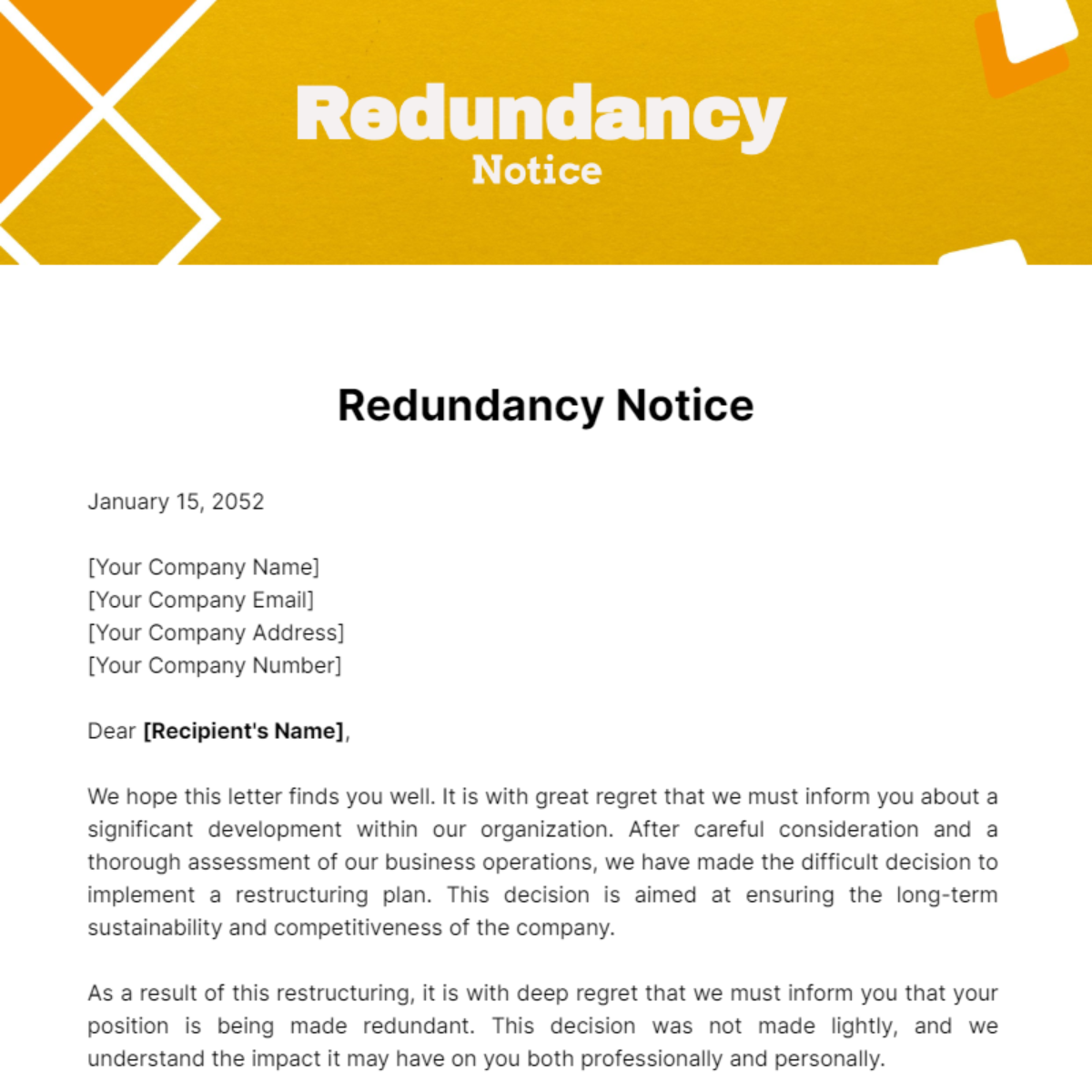Checking Out the Interaction Between Company Redundancy and Business Adaptability for Future Development
In the dynamic landscape of today's company globe, the detailed connection in between firm redundancy and business adaptability emerges as a critical factor for sustained growth and success. Companies frequently deal with the difficulty of striking a fragile balance between preserving a level of redundancy to alleviate threats and fostering adaptability to react swiftly to the ever-evolving market needs.
Importance of Company Redundancy
Company redundancy is a crucial element that enhances organizational resilience and mitigates operational risks. By incorporating redundancy measures within the business structure, companies can better withstand unexpected interruptions and changes in the service atmosphere. Redundancy functions as a tactical buffer, enabling business to adapt and respond effectively to unexpected obstacles without endangering crucial procedures.
One key aspect of the importance of firm redundancy is its duty in making certain connection during times of crisis. When confronted with sudden changes or emergency situations, repetitive systems, sources, or workers can action in to maintain critical features and avoid prevalent interruptions. This connection not just safeguards the firm's reputation and consumer trust fund however also minimizes economic losses and operational downtime.

Methods for Business Flexibility

Producing adaptable organizational frameworks that allow for quick changes to market characteristics and client needs is important for remaining affordable in a quickly developing environment. By proactively recognizing possible disturbances and chances, organizations can proactively flourish and adjust in an ever-changing service landscape.
Balancing Redundancy and Flexibility
Accomplishing a harmonious equilibrium in between functional redundancy and organizational adaptability is extremely important in navigating the complexities of a vibrant company environment. Redundancy within a firm offers a safeguard, making sure continuity and stability in procedures. Nevertheless, an excess of redundancy can cause ineffectiveness and prevent adaptability to altering market conditions. On the various other hand, organizational flexibility allows companies to react quickly to exterior interruptions and confiscate new possibilities. Striking the best equilibrium between redundancy and versatility is a fragile process that needs a deep understanding of the company's goals, market characteristics, and risk tolerance.
To attain this equilibrium, firms require to perform normal analyses of their procedures to recognize locations where redundancy is essential for risk mitigation and where adaptability can drive innovation and development. Implementing adaptable frameworks, promoting a culture of continuous knowing and improvement, and encouraging open communication across all levels of the company are vital methods to balance redundancy and versatility efficiently. By aligning these two crucial elements, firms can position themselves for lasting development and success in an ever-changing company landscape.
Case Researches on Adjustment Success
In checking out instances of successful business adjustment, it becomes evident that the interaction in between functional redundancy and versatility is a defining element in shaping durable businesses. A DVD rental service, Netflix demonstrated remarkable versatility by transitioning into a streaming platform when digitalization interrupted the market. These instance studies important site underscore the relevance of functional redundancy coupled with business adaptability in fostering long-lasting growth and competition.
Structure Resilience for Future Growth
Building durability for future growth requires a strategic placement of functional procedures with market characteristics and emerging fads. Firms should adapt to changing settings by cultivating a culture of flexibility, innovation, and continual enhancement.
Moreover, fostering solid relationships with stakeholders, such as consumers, workers, suppliers, and the area, is necessary for keeping and weathering uncertainties depend on and support throughout turbulent times. Effective communication and transparency play a crucial role in structure strength, as they help straighten assumptions and help with cooperation in navigating unpredictabilities.
In addition, companies need to prioritize knowing and advancement campaigns to upskill staff members and equip them with the necessary tools to adapt about his to altering scenarios. By buying their labor force, firms can boost their adaptability and agility, ultimately reinforcing their resilience for sustainable future development.
Conclusion

In the vibrant landscape of today's business world, the detailed relationship between firm redundancy and organizational versatility arises as an essential variable for sustained growth and success. Business often deal with the difficulty of striking a fragile balance between preserving a degree of redundancy to mitigate risks and promoting versatility to react promptly to the ever-evolving market demands.To achieve this balance, companies require to perform normal assessments of their operations to identify areas where redundancy is required for danger reduction and where versatility can drive innovation and growth.In conclusion, company website the interplay between company redundancy and organizational adaptability is important for future growth. Building durability with a combination of redundancy and versatility will guarantee that business are prepared for the difficulties of the future.